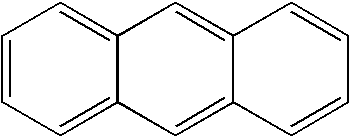Metal oxide-containing film-forming composition, metal oxide-containing film, metal oxide-containing film-bearing substrate, and patterning method
a metal oxide-containing film and composition technology, applied in the direction of other chemical processes, photosensitive materials, instruments, etc., can solve the problems of resist film damage, pattern collapse, low resolution performance of photoresist coating, etc., to achieve high accuracy, sufficient etching resistance, and high accuracy
- Summary
- Abstract
- Description
- Claims
- Application Information
AI Technical Summary
Benefits of technology
Problems solved by technology
Method used
Image
Examples
synthesis example 1
[0306]A mixture of 10 g of phenyltrimethoxysilane, 20 g of 2-(3,4-epoxycyclohexyl)ethyltrimethoxysilane, 10 g of germanium tetrabutoxide, and 35 g of propylene glycol methyl ether was added to a mixture of 40 g of propylene glycol methyl ether, 1 g of methanesulfonic acid, and 50 g of deionized water. The mixture was held at 40° C. for 12 hours while hydrolytic condensation took place. Then the by-product alcohol was distilled off under a reduced pressure. To the reaction mixture, 800 ml of ethyl acetate and 300 ml of propylene glycol methyl ether were added. The water layer was separated off. To the remaining organic layer, 100 ml of deionized water was added, followed by agitation, static holding and separation. This operation was repeated three times. To the remaining organic layer, 200 ml of propylene glycol methyl ether was added. Concentration under a reduced pressure yielded 100 g of a propylene glycol methyl ether solution of metal oxide-containing compound #1 (polymer conce...
synthesis example 2
[0307]A mixture of 10 g of phenyltrimethoxysilane, 20 g of 2-(3,4-epoxycyclohexyl)ethyltrimethoxysilane, 10 g of titanium tetrabutoxide, 20 g of 2,4-pentanedione, and 35 g of propylene glycol methyl ether was added to a mixture of 40 g of propylene glycol methyl ether, 1 g of methanesulfonic acid, and 50 g of deionized water. The mixture was held at 30° C. for 12 hours while hydrolytic condensation took place. Then the by-product alcohol was distilled off under a reduced pressure. To the remaining solution, 200 ml of propylene glycol methyl ether was added. Further concentration under a reduced pressure yielded 120 g of a propylene glycol methyl ether solution of metal oxide-containing compound #2 (polymer concentration 20%). The product had a Mw of 8,000.
synthesis example 3
[0308]A mixture of 10 g of phenyltrimethoxysilane, 20 g of 2-(3,4-epoxycyclohexyl)ethyltrimethoxysilane, 10 g of hafnium tetrapropoxide, and 35 g of propylene glycol ethyl ether was added to a mixture of 40 g of propylene glycol ethyl ether, 1 g of hydrochloric acid, and 50 g of deionized water. The mixture was held at 10° C. for 12 hours while hydrolytic condensation took place. Then the by-product alcohol was distilled off under a reduced pressure. To the remaining solution, 200 ml of propylene glycol ethyl ether was added. Further concentration under a reduced pressure yielded 100 g of a propylene glycol ethyl ether solution of metal oxide-containing compound #3 (polymer concentration 20%). The product had a Mw of 5,000.
PUM
| Property | Measurement | Unit |
|---|---|---|
| Wavelength | aaaaa | aaaaa |
| Composition | aaaaa | aaaaa |
| Hydrolysable | aaaaa | aaaaa |
Abstract
Description
Claims
Application Information
 Login to View More
Login to View More - R&D
- Intellectual Property
- Life Sciences
- Materials
- Tech Scout
- Unparalleled Data Quality
- Higher Quality Content
- 60% Fewer Hallucinations
Browse by: Latest US Patents, China's latest patents, Technical Efficacy Thesaurus, Application Domain, Technology Topic, Popular Technical Reports.
© 2025 PatSnap. All rights reserved.Legal|Privacy policy|Modern Slavery Act Transparency Statement|Sitemap|About US| Contact US: help@patsnap.com



